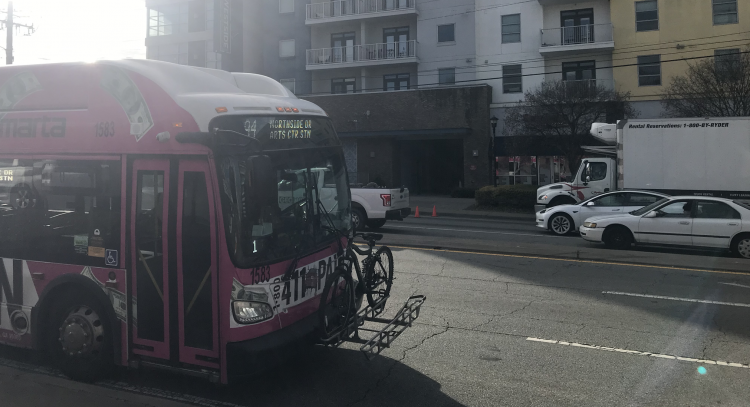Environment
Short Takes
Georgia’s new data center rule increases local controlDecember 1, 2025

By Mike Dobbins
Dec. 1 – Below I outline how transit agencies might use funds from the federal Infrastructure Investment and Jobs Act (IIJA) to address the equity purpose of the act in concert with meeting the affordable housing crisis.
Lower income people, often lacking cars yet more bound to their work locations, suffer greater travel inequities than others. Getting to jobs, shopping, health, education, and other services costs more and takes longer. Shortening the distance and the accessibility to transit from home to these destinations begins to ease that burden.

To meet these goals, affordable housing needs to be closer, and transit access needs to increase. Concentrating housing on or near transit corridors begins to serve both goals. It shortens distance, and it builds ridership.
On the first, using IIJA funds to purchase properties along corridors provides a way of controlling and writing down land costs. Land costs are the single biggest obstacle for producing affordable workforce housing.
On the second, ridership is the core metric of a successful transit system. Prioritizing system improvements, here including affordable housing, toward transit-oriented people (TOPs) will greatly boost ridership.
The result would shorten commute distances, shorten travel time, reduce travel costs, and improve air quality.

As it happens, MARTA is already engaged in transit-oriented development projects, utilizing land resources around a few of its rail stations, where the provision of greater affordability is increasingly sought. It may be just a matter of extending this policy and practice to bus corridors.
These depend on partnering with developers to deliver the product, in which the Edgewood-Candler Park TOD is the latest success story. While most of these depend on land resources that MARTA already owns, it is not a stretch to use IIJA to secure properties along heavily travelled bus corridors to meet the goals of the Act.
Many transit-served corridors are presently a pretty shabby lot, pockmarked with parking lots and set back one-story boxes for one or another use. Building mixed-use, missing middle housing can transform these corridors into boulevards, ped and bike friendly, consistently illuminated and tree-scaped. Bus stops become sheltered, sittable information centers, like elevators in Class A office towers. Crosswalks become safe, legible, and logical. The boulevard framed by front facing mixed use three to six story building walls, in addition, serve to buffer the mostly single-family neighborhoods that flank them.

0